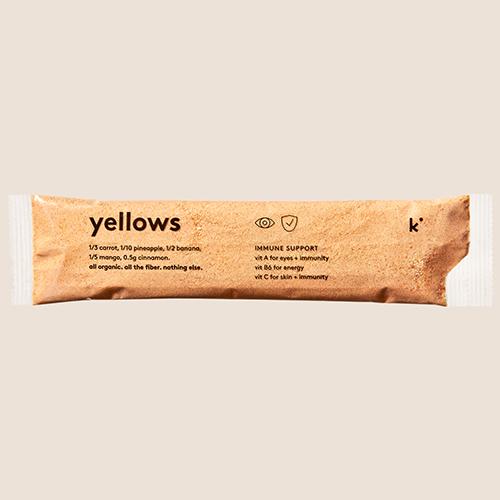When good ideas take root
Ever wondered who’s behind the instant smoothie revolution? Meet our founder, Tomás, and find out what inspired him to create an easier way to get to 5-a-day.
Ever wondered who’s behind the instant smoothie revolution? Meet our founder, Tomás, and find out what inspired him to create an easier way to get to 5-a-day.
kencko was born out of a genuine need. Not a speculation about what people might be persuaded to buy, like so many new products; not even just a gap in the market, though it was that too. No, kencko arose because Tomás Froes urgently needed to change his life. In 2014, back home in Portugal after a stint working in China, Tomás realized he was sick: what had begun as a burning in his stomach had reached a new peak of discomfort.
‘I felt dizzy, all the time’ says Tomás. ‘I’d had problems with acidity in my stomach, but this was new – I knew something was going on. My body was telling me that things had to change.'
Tomás saw a doctor in his hometown of Lisbon, Portugal’s beautiful, bustling seaside capital, and heard exactly what he didn’t want to hear: you’ve got acute gastritis, and need to take pills to protect your stomach from the acid, every day, from now on. But Tomás had different ideas. While growing up in Lisbon, he’d spent weekends and summers playing and working at his grandfather’s farm north of the city - a place rich with corn, broccoli, tomatoes; more recently, apples and pears. Unusually, among these farmers were a number of vegetarians - not a commonplace sort of diet in Portugal at the time.
‘I don’t really know why,’ says Tomás, ‘maybe it was that time on the farm, or knowing these vegetarians in my family - whatever it was, it made me certain there was something else I could do besides taking medicine.’
Tomás had a head start. He’d read The China Study - the game-changing study that explores links between diet and health, and that showed reducing reliance on animal products could have profound, positive effects. Tomás decided that a vegan diet might help his gastritis without medication. So he shifted to a diet of at least five servings of fruit and vegetables each day, no dairy and little-to-no meat. And everything changed – with the change in diet, his gastric acidity levels went down, resulting in no need for the medicine.
But because of his hectic startup lifestyle, Tomás found it hard to get all those servings in. ‘I kept winding up with rotten fruits and vegetables in my backpack, so I started looking. I added fruit juices to my 5-a-day, to simplify things,’ he says, ‘but cold-press juices were expensive and didn’t last long either, and they didn’t offer the fruit’s full nutrition. It wasn’t working. So I started looking for ways to extend the shelf life on my fruits and veg.’
Tomás began learning about flash-freeze, slow-drying processes, known for years but used more in pharmaceuticals than food. He worked with nutritionists to determine which foods best retained their nutritional value through the process. He experimented with flavor combinations and storage mechanisms and soon had friends asking him to share.
‘I felt like, “Hey, I’ve faced this issue – maybe there are more people like me?” That’s when I learned that, worldwide, 50% of the fruits and vegetables produced are wasted annually, due to their perishability. People need – and want! – to consume more fruit and veg; the vast majority of people don’t reach the daily recommendation. Yet half of our production is left to waste. Something had to change.’
That’s when Tomás incorporated kencko, in an effort to make the nutritional benefits and great taste of fresh fruits and vegetables long-lasting and portable. And he’s never looked back.
‘Only 10% of people in the US get their recommended five servings of fruit-and-veg per day,’ says Tomás. ‘If we can be some part of changing it to 20% – that improvement in nutrition means less cancer, less heart disease, such a healthier life. What a thing to succeed at.’
there's more good content where that came from
